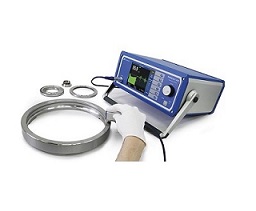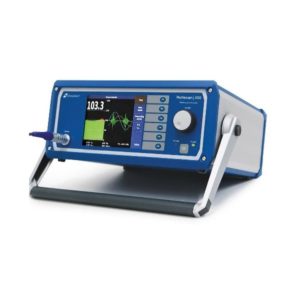Barkhausen Noise Analysis, also known as the micromagnetic method, is based on a concept of inductive measurement of a noise-like signal generated when a magnetic field is applied to a ferromagnetic sample.
Barkhausen Noise Analysis (BNA) also referred to as Magnetic Barkhausen Noise (MBN) is a non-destructive technique involving the inductive measurement of a noise like signal induced in a ferromagnetic material by an applied magnetic field. Continuous development of the technology and application has resulted in BNA becoming a recognized and trusted non-destructive technique for materials characterization and defect detection testing.
Barkhausen Noise is directly affected by two important material characteristics, the first being the presence and distribution of residual (and applied) stresses. In most commonly used steels the Barkhausen signal will increase with the presence of tensile residual stress and decrease in the case of compressive stress states. The method is not only sensitive to stress magnitudes but direction as well. Barkhausen Noise is also affected by changes in material microstructure. This effect can be broadly described as correlation to material hardness where hardened microstructures result in lower measured values. Conversely, soft or tempered microstructures result in higher Barkhausen Noise intensities. In most instances the analysis of the Barkhausen Noise signal can be represented as a single value, typically referred to as the magnetoelastic parameter or mp. Measurements commonly require a small sensor to come in contact with or very near to the sample surface. Acquisition and processing of the signal is completed in real-time resulting in immediate feedback and the capability to meet high throughput scenarios.
The more common applications of the technique include the detection of grinding damage (burn) in bare and plated components as well as process verification and defect detection in heat treated parts. More recently, the method has been shown to provide accurate, non-destructive case depth analysis. Barkhausen Noise Analysis has proven to be an advantageous alternative for inspections that traditionally required time consuming and cost prohibitive semi- and completely destructive techniques.
Applications:
- Grinding Damage Detection
- Heat Treatment Defect Detection
- Case Depth Analysis
- Residual Stress Measurement
The Rollscan 350 analyzer brings power and efficiency to quality inspection of piston pins, gears, bearing rings and rollers, camshafts and crankshafts, and aircraft landing gear parts.
The Rollscan 350 is a digital Barkhausen noise analyzer. It is designed for surface quality control and testing of near-surface defects such as grinding burns, heat treatment defects, as well as changes in stress and microstructure in a wide variety of ferritic steel and other ferromagnetic materials. Quality inspection with Rollscan is fast and can easily match the production rates of most manufacturing lines, enabling process control in real-time. As a result, significant quality improvements, savings on material costs and improved manufacturing productivity have been realized by companies using the Rollscan system.



